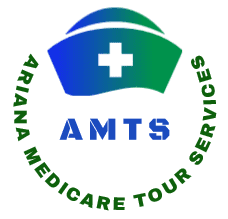One in every four pregnancies worldwide will result in a miscarriage. Also, induced abortion is the set of medical procedures that are performed daily all over the world. Obtaining information about abortion for marriage helps reduce its potential complications before, after, and during the abortion.

In the following article, we have solved your questions about abortion, its types, causes, stages of abortion, complications, conditions of legal abortion in Iran and methods of induced abortion.
In this article you will read:
- What is abortion?
- The difference between stillbirth and miscarriage
- The difference between stillbirth and miscarriage
- Causes of spontaneous abortion
- Methods of spontaneous abortion or induced abortion
- Legal conditions for abortion in Iran
- What are the complications of abortion?
- Risk factors and complications of abortion
What is abortion?
Miscarriage is the loss of a pregnancy before the 20th week of pregnancy. Abortion is divided into two basic types:
- Spontaneous Abortion.
- Induced Abortion.
- Spontaneous Abortion occurs in 15-25% of pregnancies. 80% of these cases occur in the twelfth week. Of course, the incidence of spontaneous abortion is higher than the statistics obtained.Because a miscarriage that occurs in the first four to six weeks of pregnancy is usually confused with a delayed period.
- Induced Abortion is another type of abortion. In this type of abortion, people abort the fetus for reasons such as health problems of the fetus or the unwillingness of the child and the lack of conditions to keep it. Certified abortion is a specialized procedure and must be carried out under the supervision of a physician and specialist. This type of abortion has limitations in our country. We will explain more about this below.
What are the symptoms of miscarriage?
In many cases, miscarriage is asymptomatic, so that a person does not notice it. The main symptoms of a miscarriage are pelvic pain and cramps, abdominal pain, and vaginal bleeding. The older the fetus, the more severe the symptoms. When you notice the first signs of miscarriage, you should go to the medical center immediately. Treatment measures in a patient who has had an abortion or about to have an abortion can be very helpful and prevent possible complications from the abortion.
In these cases, medical centers may perform diagnostic tests, such as a human chorionic gonadotropin or beta test in blood and urine, and an ultrasound to check the fetal heartbeat.
Causes of Spontaneous Abortion
The causes of spontaneous abortion are briefly explained below:
- Uncontrolled gestational diabetes causes spontaneous abortion in early pregnancy.
- Antibodies in the mother’s body against the thyroid gland in Hashimoto’s disease can cause a miscarriage.
- Infections are also uncommon causes of miscarriage in early pregnancy.
- There is a direct and strong relationship between smoking and miscarriage in early pregnancy.
- Radiotherapy at high doses to treat cancer may cause a miscarriage.
- Certain hereditary coagulation disorders, such as antiphospholipid disease, increase the likelihood of thromboembolism and miscarriage.
- Uterine problems such as intrauterine adhesions that occur after uterine curettage can also cause miscarriage.
- Of course, miscarriage is not the only cause of vaginal bleeding in the first trimester of pregnancy, and other factors such as ectopic pregnancy, false pregnancy, cervical polyps, cervicitis, and cancer of this region must also be considered.
Also, after a series of processes that occur in the body during pregnancy, spotting may be normal in early pregnancy.
Methods of induced abortion or induced abortion in Iran
There are different methods of induced abortion. Choosing the right method for an induced abortion depends on the length of a person’s pregnancy. In some treatment clinics, a person can choose the method of their abortion. Also, these recommendations may differ in different countries.
Abortion with vaginal pills and oral pills
The abortion pill is either swallowed orally by a pregnant woman, or placed in the vagina and pushed toward the cervix. This method can be used as soon as the pregnancy begins and can be used until the 10th to 12th week. Tablets are used in two doses. The first pill is given to the pregnant woman in the clinic, and the next pill is taken in the clinic or at home, according to the pregnant woman’s desire and circumstances. By taking the second pill, within a few hours, uterine contractions will occur, then bleeding, then uterine emptying, and a miscarriage will occur.
Surgical Abortion
Surgical abortion is another method of abortion. This method is used up to 16 weeks. (Although some medical centers consider the maximum use of this method to be up to 12 weeks.) Then the specialist doctor reaches into the uterus from the vagina using a surgical device and attempts to remove the fetus and the contents of the uterus. This surgery usually takes five to ten minutes. After having this procedure, you need to stay in the treatment center for an adequate period of time and rest.
What are the complications of abortion? Risk factors and complications of abortion
The higher the number of fetal births in the first days of pregnancy, the less complicated it will be and the less bleeding a person will have. Most women do not report any secondary problems after an abortion, but a few may experience complications after an abortion. Including the following complications:
- Uterine Infection
- The remaining parts of the placenta or fetus remain in the uterus
- Damage to the uterus and cervix
- Heavy bleeding and anemia
If any of the above complications occur, remedial measures are required. Abortion does not affect the possibility of re-pregnancy and a normal pregnancy in the future, unless we experience repeated miscarriages and the miscarriage has an underlying cause. You may get pregnant again after a miscarriage due to the uterus’s higher readiness for refertilization. If you are not planning to become pregnant, use contraception with caution. Also, read more about strengthening methods and solutions for cleaning the uterus after an abortion in this article.
Safe Abortion in Iran: Health Care Saves Women's Lives
When access to safe abortion care is not possible, many women and girls resort to risky abortion methods, without regard for their safety and legal restrictions. And since MSF projects often see patients suffering severe and sometimes life-threatening effects from unsafe abortions, we have expanded our efforts to help women access safe abortion care in our private clinics and hospitals, depending on the circumstances of the pregnant woman.
What is safe abortion care in Iran?
Abortion is considered safe:
- First, if the person performing or assisting in the abortion has received the necessary training
- and second, if an evidence-based method appropriate to the duration of the pregnancy is used to terminate the pregnancy.
Examples of safe, evidence-based abortion methods include: - medical abortion (abortion by abortion pill),
- Performing an outpatient abortion in an appropriate sanitary environment by a qualified provider.
Every minute, a woman or girl somewhere in this world undergoes an unsafe abortion using dangerous methods that may have serious consequences for her health, even death.
How to use the pills
Make Sure: Before you use the pills, before you attempt an abortion, read our advice on:
- Your pregnancy is in the first 13 weeks (91 days).
- You have reviewed all of our general considerations and advice
What can I eat and drink during an abortion?
Abortion with the pill can come with a lot of questions: Where can I get the pills in my country? How do I use the pills safely? What are the risks of complications? These questions are common and require a little research ahead of time. But there is one question few women consider asking until they actually go through with the abortion process: What can I eat and drink?
The answer is simple: eat and drink as you wish. When you perform a medical abortion, there are no restrictions on what you can perform.
However, there are some things you can eat or drink to take care of yourself during a miscarriage. Below we offer some key recommendations to support your body through this process:
- Stay hydrated
Drinking plenty of water or other healthy drinks like tea is an important part of the abortion process. Dizziness and fatigue are common side effects of abortion medications that can be exacerbated by dehydration. And let’s be clear: alcohol does not dehydrate you. Avoid it during an abortion. - Calm your stomach
Nausea is a common experience when using the pills. Try to eat foods that help calm your stomach. It can fuel toast, crackers, or soup without contributing to an upset stomach. - Avoid indigestion
Your stomach may be really sensitive during or after the abortion pill so avoid eating foods that may contribute to indigestion. For many women, this means passing on spicy or greasy meals until after the abortion is over. - keep warm
The warmth helps our muscles relax, which can lead to less pain from contractions. You can help keep your body warm by consuming warm foods and drinks. Soups, soups, and tea are all good options.
- Iron rich foods
There’s no way around it: abortion causes bleeding. To support your body through this process, consider eating iron-rich foods. This is especially true if you already know you are anemic. Red meat, fish, beans, lentils, chickpeas, spinach, broccoli, and our favorite dark chocolate are all rich in iron.
Prepare a safety plan before using the abortion pill in case you need emergency medical help
Sources:
1) The Johns Hopkins Manual of Gynecology and Obstetrics (4 ed.). Lippincott Williams & Wilkins. 2012. pp. 438–439. ISBN 9781451148015. Archived from the original on 10 September 2017.

